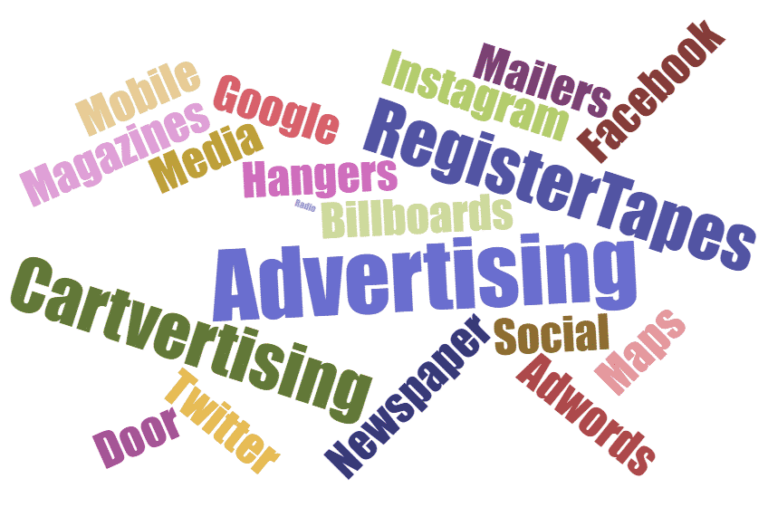Know Your Digital Marketing Terms
How well do you know the vocabulary of Digital Marketing?
Test your knowledge with the quiz below!
Overview
This is a quiz to help reps bone up on basic digital vocabulary.
Digital Marketing has a ton of terms, all of which are made to make those people in Silicon Valley sound smart. With the 10 terms you can play too!
What does CPM mean?
- Calories Per Military Press
- Cost per Mile
- Cost Per Mille
Click to see the answer.
Answer:
If you chose Cost per Mile, forgetting the extra L is forgivable.
If you picked Military Press, you are just goofing around.
Correct Answer: Cost Per Mille (With 2 LLs)
No, I don’t have an answer for why it’s not CPT for Cost per Thousand, other than the Latin word “Mille” sounds more smarter.
Doing the Math:
Note it is COST / THOUSAND Impressions.
So, $2400 for 240,000 impressions is
$2400 / 240 = $10 CPM
If you are doing PPC, which term relates to how much Google will charge you?
- Arm and a Leg
- IRS
- CPC
Click to see the answer.
Answer
Arm and a Leg is technically right….
The IRS charges you as well, but….
Correct Answer: CPC or Cost Per Click.
CPC is how much you’ll pay each time someone clicks on your ad in Google.
Typical CPC is from about $3 up to $12 or more for our Top Categories.
What is the difference between Paid and Organic Digital Advertising?
- You have to pay Google to do Paid Advertising. Organic Advertising is free!
- One has GMO milk
- In “Paid” you are paying the website company itself, like Google. For “Organic”, you work hard to make your website rank well or your social posts “viral”.
Click to see the answer.
Answer
Organic is only free if we are talking about photosynthesis.
It’s like Granola, what isn’t fruits or flakes are nuts.
Correct Answer: In Paid Advertising you pay Big Search or Big Social. Organic advertising is spending time or money to get noticed by Big Search and Big Social.
A lot of folks feel that having a nephew post on Facebook once a week is “Organic”. It is a bit like juggling however, a lot of people can do it. But it takes a huge amount of time to make it big!
What does PPC mean?
- Promptly Politically Correct
- A type of sprinkler pipe, a cousin to PVC
- Pay Per Click
Click to see the answer.
Answer
If you thought A or B, one word: Really?
Correct Answer: Pay Per Click
PPC means that you don’t get charged for your ad until someone actually clicks on it. The argument is that you won’t get charged unless someone is actually interested in your ad.
HOWEVER, Google and Facebook won’t let you run ads for just any kind of search or they charge a fortune to do it. For example, you can’t run a Reality or Restaurant ad for people who search for Taylor Swift. IndoorMedia products or other impression-based advertising allow you to target people who may not be searching for your service at this exact instant.
If you are measuring to see if your Digital Ad is appealing enough for people to take an action, you want…
- To Ask mom
- The SETI
- The CTR
Click to see the answer.
Answer
Look, my mom was president of the PTA in the 70’s. She knows a thing or two about advertising.
SETI is the Search for Extra Terrestrial Intelligence. I have a hard enough time finding it on this planet.
Correct Answer: The CTR (Click Through Rate)
If we want to know if someone liked a digital, the simple answer is did they CLICK on it? Hence, CTR or Click Through Rate. This is calculated by taking the number of clicks and dividing by the number of impressions.
Typical CTRs for PPC are around 5-7%. For Display Ads (aka Digital boost) it is more like 0.46%.
This is one reason Digital Boost is more about branding than redemptions.
Most websites that have ads don’t negotiate one-on-one to get advertisers. Instead they use a…
- Reseller
- Anyone from the cast of Glengarry Glen Ross
- Ad Network
Click to see the answer.
Answer
If you answered Reseller, that is technically true, but not the right term.
If you answered Glengarry Glen Ross, If you don’t know that movie, your taste in movies may be lacking, but note that one of the actors is having trouble with a new western film.
Correct Answer: Ad Network
Before an ad shows on a website, a request goes out to Ad Networks saying “Hey I have user number 74737AH-4774 here, anyone want to show this dude an ad?” The Ad Networks then look at their data and figure out if they have a business that wants to show an ad that matches 74737AH-4774’s profile. If they have one, it offers a bid for the ad. Top dollar wins!
Attribution is $1 word for the 10-cent idea of
- Knowing the level of your Dungeons and Dragons Character.
- How information is gathered to form causal judgment.
- Tracking how well various marketing channels are working
Click to see the answer.
Answer:
If you play Dungeons and Dragons, our Wed. night group has a spot open for an Elf Magic User.
If you thought it was B, you are now ready to be our own therapist.
Correct Answer: Tracking what works.
The theory of Attribution is simple. In practice it is very, very complicated. For example, how would Popeyes Chicken know how well their Super Bowl ad worked? Even digital advertising struggles with attribution. Maybe a customer clicked on an ad and then called. Maybe the reason they clicked on the ad in the first place was the ad they saw at the grocery stores. When doing ecommerce, it is a lot easier to track the last thing to attribute. If you shop Amazon and then see an ad for those shoes later on another website and click, sure we can say that ad created a sale. But was that the only advertising for those shoes? Did you see a YouTube commercial that got you excited about it to begin with or was it your favorite influencer?
Conversion is the term for
- We will not make a joke here given the political climate.
- Taking a sudden liking to Converse shoes
- When a customer takes a specific action, such as completing a form or completing a sale.
Click to see the answer.
Answer
If you want to create your own joke, remember you may be funny, but you have to know the room.
Correct Answer: Customers taking Action!
There can be lead conversion, usually when someone fills out a form, or a Sales Conversion, when the sale is made.
Conversion Rate is simply the Number of Conversions to the number of people. For example, suppose we had 3,500 people visit a page on our website and 140 of them filled out a get pricing form.
140 / 3,500 = .04 = 4% Lead Conversion Rate.
Digital Display/Banner Advertising is best described as
- An illuminated prom sign from Sign-O-Rama.
- A virtual staircase in a video game with a digital banner (get it?)
- Ads displayed on millions of websites.
Click to see the answer.
Answer
Look, if you thought the answer was A or B, I am thinking you are not really reading the answers.
Correct Answer: Digital Display or Banner ads are those ads that pop up reminding you to buy that sleep mask you looked at ONE time on amazon and now appear on every sports site you visit.
Ah-hem, ‘round here we call it Digital Boost. I once was looking up support hose for my wife after her surgery and there were some awkward looks as I was showing some colleagues a blog post…
What is the difference between Multi-Channel vs. Omni-Channel?
- Multi is for movie theaters, Omni is for dinosaurs.
- It is a misspelling, and it means Many Perfumes and Universal Perfume. It should be Chanel.
- Multi means doing different kinds of advertising. Omni means that all your advertising goes together like rama lama lama ka dinga da dinga dong.
Click to see the answer.
Answer
If you got it wrong, at this point, there is no hope. It is the letter C. It is Always the letter C.
Correct Answer: Multi-Channel is a lot of advertising. Omni-Channel is doing a lot of advertising well.
Business should use multiple different advertising products. They will reinforce each other and can make both more effective in a Gestalt sort of way. But to really make the most impact, customers should experience the same brand message no matter how they find you or if they switch midstream. So, if you run an amazing print ad at the grocery store and the customer goes online, you want them to see the same messaging and branding no matter if they are looking at your website, Facebook page, or Instagram.



